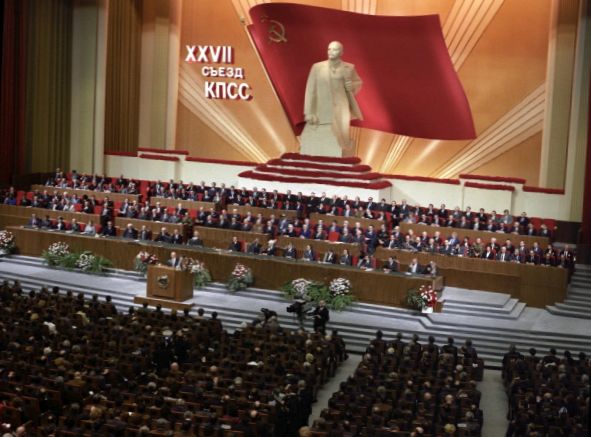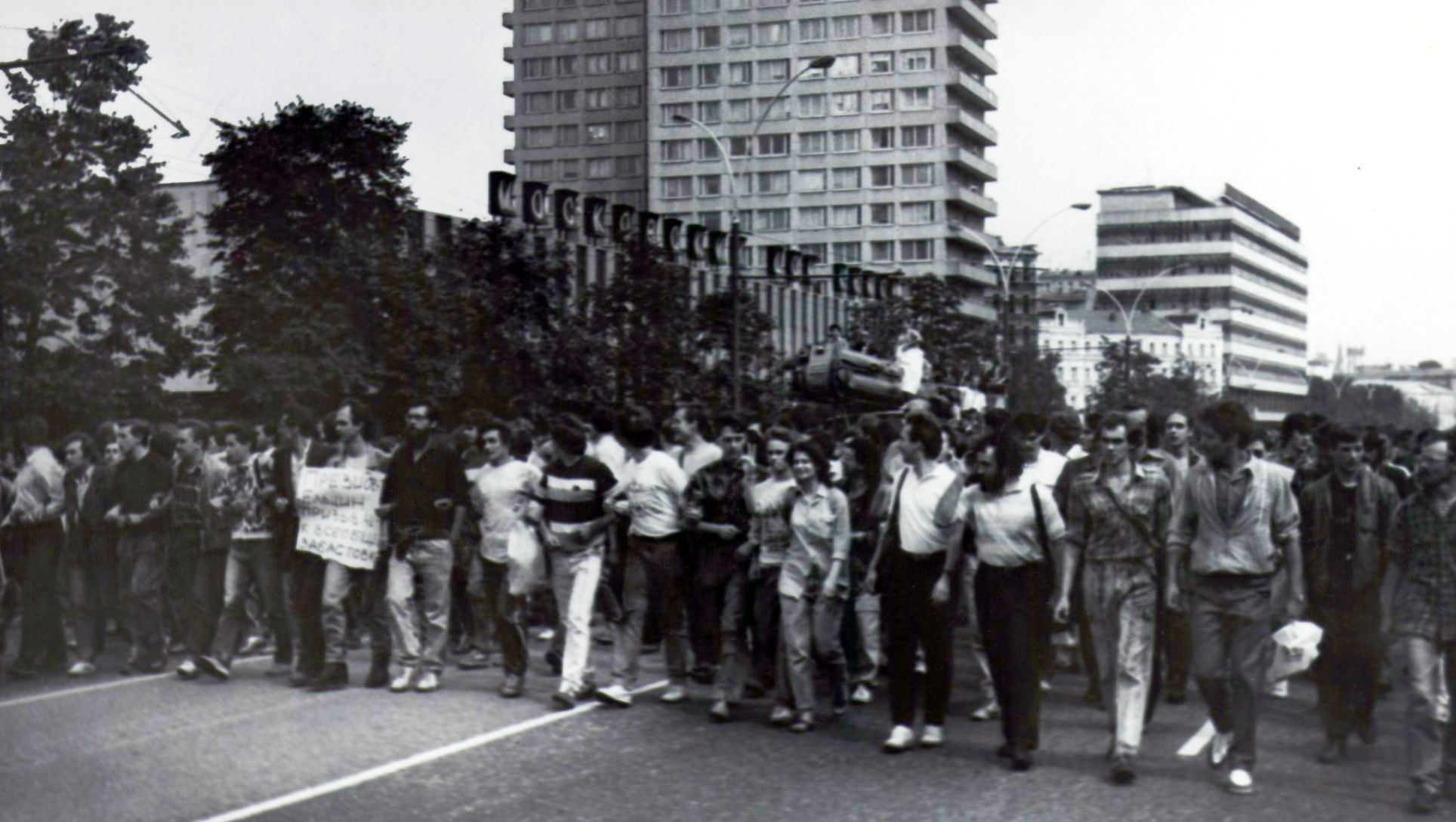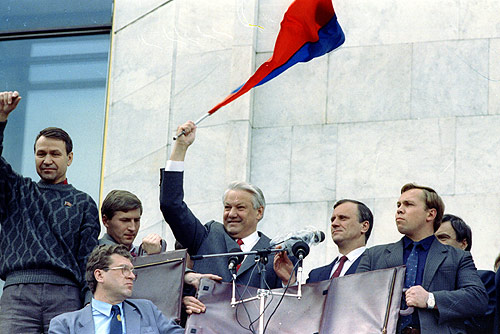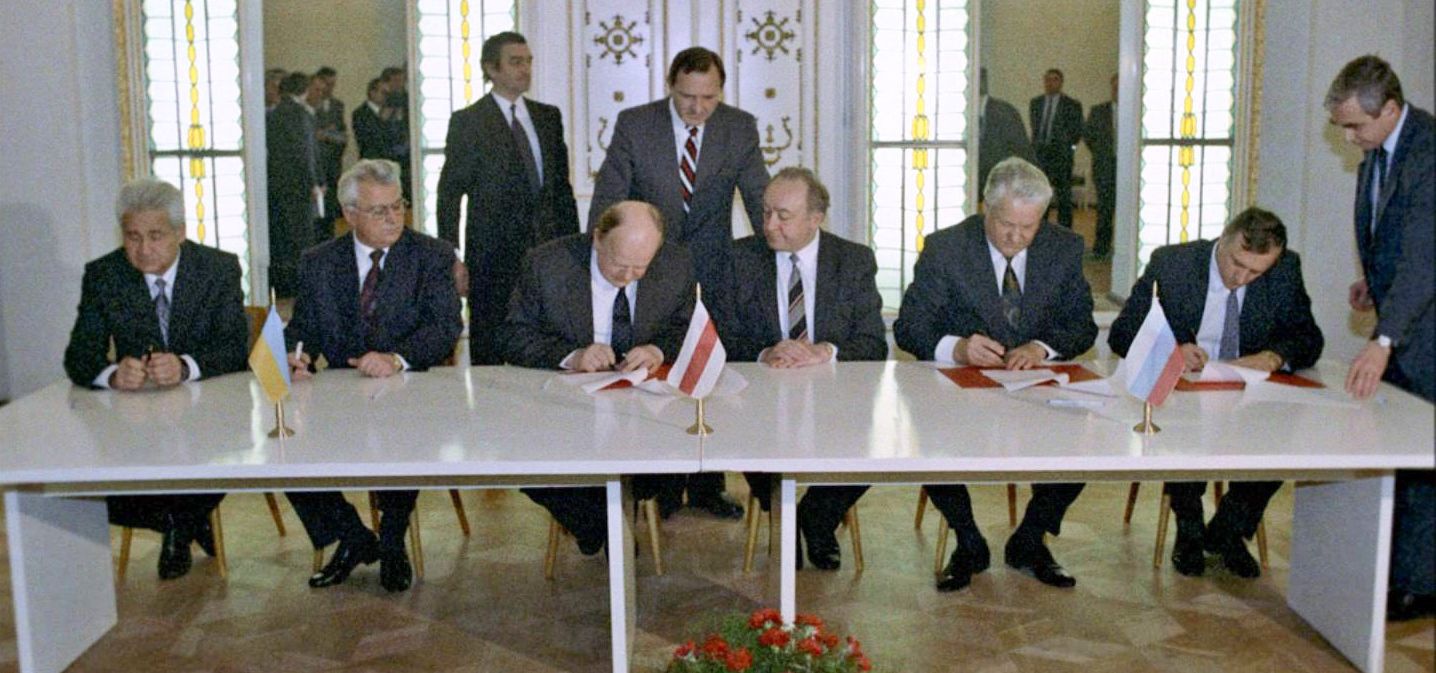Twenty-two years ago, the Soviet Parliament suspended the Communist Party after the failure of a dramatic coup attempt to remove Gorbachev.
-
September/October 2019
Volume64Issue4

In the last days of August, 22 years ago, the Soviet Union imploded.
The crash began with an abortive attempt to remove Mikhail Gorbachev from power, and it ended with a parliamentary decision to suspend the activities of the Soviet Communist Party. This last event was perhaps the most extraordinary of all: By a vote of 283 to 29, with 52 abstentions, the Soviet Parliament shut down the Communist party founded by Vladimir Lenin and his fellow revolutionaries. Citing party members’ roles in the “preparation and implementation of the state coup,” the government also assumed control of the party’s assets and archives.
A fatal blow had been struck against the tyrannical institution that had controlled Russia and the other Soviet republics for more than half a century. Margaret Thatcher, who had worked to undermine Communist Russia during the previous decade, triumphantly declared: “The forces of dictatorship and communism have been defeated, not only for now, but for a very long time to come.”

Although the speed of August’s events was astonishing even to informed observers, they hadn’t come out of nowhere. Throughout Gorbachev’s reign the Soviet bloc had been moving toward more open governmental and economic systems. By the time of the 1991 coup attempt against him, Gorbachev’s policies had already produced visible results, most famously the destruction of the Berlin Wall.
In the months following that momentous event, the unraveling of the Soviet Union had continued, as numerous Soviet republics such as Georgia and Ukraine pressed the central government for a higher degree of autonomy. And at the beginning of the summer of 1991, a new figure had risen to prominence in Moscow, who would be instrumental in his nation’s final departure from Communism. This was Boris Yeltsin, the new president of Russia. One observer would later reflect: “From the moment of Yeltsin’s presidential victory . . . the Communist party was doomed.”
But before the Communist party could be dismantled by Yeltsin and other reformists, its loyalists would strike back viciously. However, their resistance would only give the state they were trying to preserve a shock from which it couldn’t recover.
On August 19 Mikhail Gorbachev was set to sign a treaty further diminishing the power of the central Soviet government, granting greater independence to the republics. That very day, though, it was announced that he had fallen ill while vacationing in Crimea and would not be returning to Moscow. Instead, Vice President Gennadi Yanayev would temporarily take over his responsibilities. This attempt at ousting Gorbachev, disguised as a legal transfer of power, was backed by a cadre within the Soviet government including the leaders of the KGB, the defense ministry, and the ministry of the interior.

This was an alarming turn of events, creating confusion in the highest circles of one of the most powerful countries in the world, but the coup collapsed almost as quickly as it started. Its principal plotters were a disorganized group, and in later days the world would learn that some of them, including Yanayev himself, had been drunk throughout significant portions of the coup attempt.
The coup’s leaders fumbled their plans to use the military to lock down Moscow, and several hours passed before the armed forces could establish an intimidating presence on the streets of major cities. The junta also failed to effectively censor the media, so the illegitimacy of the new government’s actions was soon broadcast to the citizens of the U.S.S.R.
Most important, the liberalizing forces already in motion began to move with even greater strength and urgency. Provincial commanders rejected or simply disregarded orders from their superiors in the capital. High-profile government officials, including Leningrad’s mayor, Anatoly Sobchak, allowed protests to go on unimpeded, and demonstrations spread throughout the Soviet republics. In a stunning act of defiance, Boris Yeltsin led demonstrators in an effort to barricade the parliament, standing in front of—and on top of—tanks to prevent them from storming the legislature.
By August 22, less than half a week after the initiation of the coup, Gorbachev had been restored to power. After his return, the demand for reform was overwhelming. Though Gorbachev had reformist tendencies, he was not willing to accept the death of the Soviet Union. However, in the end his hesitation was unimportant.

Yeltsin, with his steadfast opposition to the coup, had risen to a position of international leadership, and he seized the political opportunity with which he was presented. Within weeks he installed his allies at the interior ministry, the finance ministry, and the central bank. His friend Ivan Silayev was appointed to lead a task force restructuring the government of the Soviet empire.
Yeltsin had become the unquestioned leader of a vast anticommunist coalition, newly in command of the state and supported not only by ideological liberals but also by nationalist forces and the Russian Orthodox Church.
It was in the midst of these events that the Soviet legislature took the step of voting to suspend the operations of the Communist party. The result of the vote was lopsided, but the number of abstentions and “nay” votes, 81, was actually the highest of the legislative session. Although the events of the coup virtually required the termination of the party, there were still elements within the government that hoped to save the organization that had led the October Revolution in 1917.
These efforts were destined for failure, however, as individual Soviet republics suspended and disbanded local branches of the Communist party, effectively cutting off the organization’s power and reach.
To American observers, these developments were stunning, confusing, and exciting. On the one hand, their nation’s longtime adversary, its opponent throughout the Cold War, was finally vanquished. On the other, the world they were living in had suddenly changed forever, and the ramifications of that change were not immediately clear. The staunchly anticommunist administration of George H. W. Bush was initially wary of supporting Yeltsin, preferring Gorbachev’s comparatively slow approach to reform. But once the unraveling of the Soviet Union had begun, the United States could do little to slow it.

On the first day of December, the pivotal republic of Ukraine voted overwhelmingly for independence from even a loose Soviet coalition. On Christmas, Gorbachev resigned from power. By New Year’s Day, the U.S.S.R. was no more. The age of mutually assured destruction was over, and a period of uncertainty had begun.

